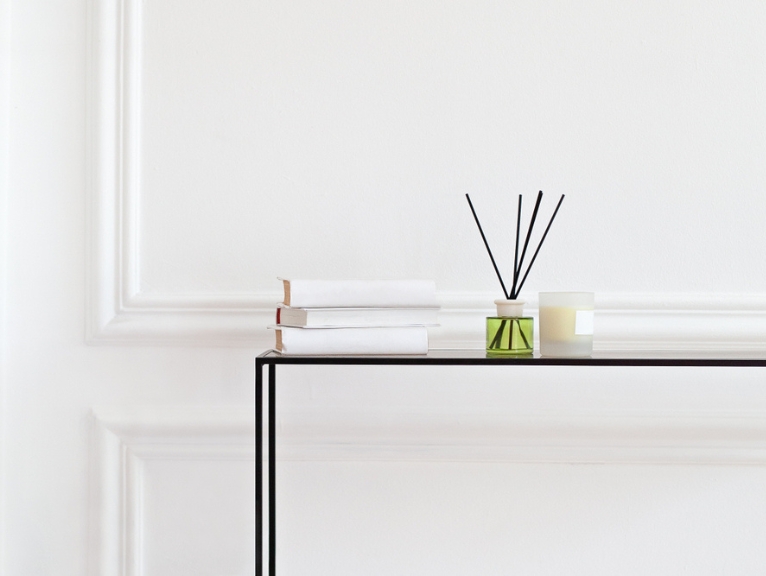
24th February 2025
How Natural Elements Can Complement Your Dental Practice Design
Designing a comfortable and welcoming dental practice only partially depends on choosing the right equipment. The environment plays a massive role in how patients feel the moment they walk through the door. Natural elements are a great way to enhance the space – they can leave it feeling calmer and more inviting, and they can even improve well-being.
Natural Light Can Play a Big Part
If you’ve worked in the industry, you’ll know that light is essential in any dental practice, but natural light makes a tangible difference. It gives you – and your staff and patients – a sense of openness, reduces stress, and improves mood. Large windows, skylights, or glass panels can bring in daylight without causing glare or disrupting your treatment spaces.
If structural changes aren’t an option, light-reflecting surfaces and well-placed mirrors can help maximise what’s already available. For a softer touch, sheer blinds or frosted glass are a good way to diffuse sunlight while keeping a degree of privacy.
Indoor Plants Can Bring Outside In
Indoor plants give a fresh and natural touch to a dental practice. They also improve air quality and even absorb noise, too.
Low-maintenance options like snake plants, peace lilies, and pothos work well in your waiting areas and consultation rooms. They’re plants that really thrive indoors and don’t take much upkeep, either. If you want to be more adventurous and add a touch more character, hanging planters or green walls can be striking features without taking up much, if any, floor space.

If, for whatever reason, live plants aren’t practical, you can get high-quality artificial greenery to provide the same visuals without needing regular care.
Natural Materials Can Make Your Dental Practice More Inviting
Wood, stone, and other natural materials can add warmth and texture to your dental practice. Wooden reception desks, stone feature walls, or bamboo flooring create a feel that’s organic but still high-end.
Working with reclaimed wood can make your space feel more traditional, while polished stone gives a sleek, professional finish. Even smaller touches, like wooden shelving or natural-fibre upholstery, can soften the clinical look that some practices have.
Relax Your Patients with Soft, Earthy Tones
Studies show that colour choice massively affects mood, and natural tones help create a calm setting. Soft greens, warm beiges, and muted blues can make a space feel less sterile; they’re colours that work well for walls, upholstery, and even decorative elements.
Accent your walls in deeper shades – think forest green or terracotta – to add depth without overwhelming the space. Pairing these with more subtle, neutral furniture and natural materials keeps everything balanced.
Create a Subtle Connection with the Outdoors
A dental practice with an outdoor space, like a courtyard or even a small garden, can offer patients a peaceful spot before or after their appointment. For some, dental anxiety is a serious issue, and this is a great way to relax people in what can be a stressful period. Even if an outdoor space isn’t available, large landscape artwork or floor-to-ceiling windows overlooking greenery can help to create a similar effect.
Don’t Underestimate the Impact of Scent in a Dental Practice
The scent is often overlooked, but it plays a key role in patient comfort. It’s easy to see how people might associate the smell of a local dentist with clinical disinfectants, which can heighten anxiety. Going for subtle, natural scents like lavender, citrus, or eucalyptus can help create a more pleasant environment.

Essential oil diffusers or discreet scenting systems can put out calming fragrances without being overpowering. It’s best to choose mild, fresh scents that won’t trigger sensitivities or allergies.
Acoustic Design Can Reduce Noise and Keep Things Calm
The sounds of drills and suction equipment can be stressful for some patients. Acoustic panels, rugs, and fabric-covered furniture can help absorb sound and create a quieter, more peaceful atmosphere.
Soft furnishings and wall-mounted acoustic panels can be arranged to blend seamlessly into a design while also giving you more noise control. Playing soft background music, like gentle instrumental tracks, can make the environment even calmer.
Make Sustainable Design Choices
Eco-friendly choices benefit both the environment and the perception of a dental practice. We know that the modern consumer cares deeply about their ecological footprint, so sustainable flooring, recycled materials, and energy-efficient lighting reduce a practice’s carbon footprint while offering a modern, responsible design.
Patient Comfort at the Forefront
Everything about the design of a dental practice should focus on making the patient experience as stress-free as possible. Natural elements improve aesthetics but also contribute to overall well-being. With natural light and greenery, as well as calming colours and thoughtful acoustic design, small changes can make a big difference.
Ready to Transform Your Practice With Curran Dental?
At Curran Dental, we specialise in design solutions that enhance both aesthetics and functionality. With expertise in building bespoke, patient-friendly environments, we can help you bring natural elements into dental practice design in a way that is both practical and visually striking. Please feel free to get in touch with any questions about improving your practice space.
FAQ
What are the best low-maintenance indoor plants for a dental practice?
Snake plants, peace lilies, and pothos are ideal as they thrive indoors with minimal care. They improve air quality and create a calming atmosphere.
How can I maximise natural light in a dental practice with few windows?
Use mirrors, reflective surfaces, and sheer blinds to distribute existing light. Light-coloured walls and well-placed artificial lighting can also help.
Are artificial plants a good alternative to real indoor plants?
High-quality artificial plants can provide the same visual benefits without maintenance. They’re a great option for busy spaces where live plants may not thrive.










